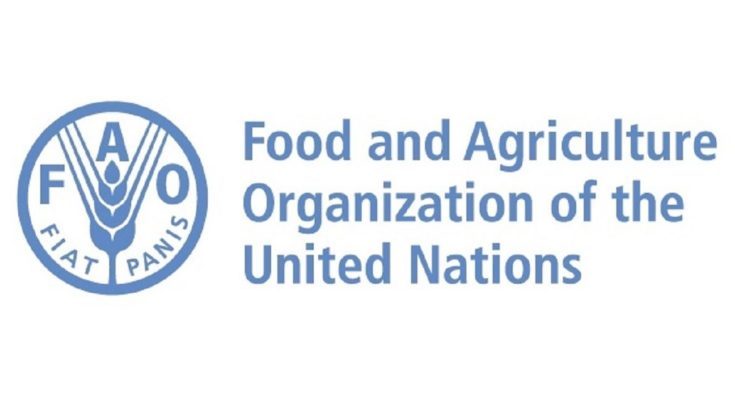Rome: The Director-General of the Food and Agriculture Organization of the United Nations (FAO), QU Dongyu, Monday presented to the FAO Council a second set of measures to reform the UN agency. These follow those approved by the Council in December 2019, aimed at making FAO more agile, efficient and accountable. Qu also outlined the current and future challenges facing food security and agriculture at large, and his vision to respond to them.
“The further adjustments that I am presenting today are guided by the same vision: creating an inclusive and agile FAO that serves its members to achieve the “four betters”: better production, better nutrition, a better environment, and a better life by further transparent, open, innovative, responsible and effective reform,” Qu said.
The proposed new measures are aimed at improving FAO’s efficiency and effectiveness “while avoiding silos and establishing transparency and accountability at the optimal levels,” added the Director-General.
A fundamental element is the proposal to implement a modular and more flexible organisational structure, thereby ensuring agility, optimal cross-sectoral collaboration and better responses to emerging needs and priorities. This includes grouping at the centre of the Organisation the core leadership team, consisting of the three Deputy Directors-General, the Chief Economist, the Chief Scientist and the Director of Cabinet, who will support the Director-General in all areas of FAO’s mandate.
The directors of Divisions, Centres and Offices, as experts in their respective subjects, would report directly to members of the core leadership team, in a dual reporting setup, thereby strengthening internal consensus and synergy and minimising bureaucracy.
Other proposals include the creation of a new office of Sustainable Development Goals (SDGs), a new division on Food Systems and Food Safety, which would provide strategic leadership in the development of more sustainable food systems, an independent ombudsperson’s office, and the strengthening of the organisation’s centres of cooperation.
This is the Investment Centre that collaborates with the International Financial Institutions; the Joint FAO/IAEA Centre, which reflects the longstanding strategic partnership in sustainable agriculture development and food security using nuclear science and technology; as well as the Joint FAO/WHO Centre that will house the Codex Alimentarius Commission and address issues related to zoonotic diseases.
The Director-General also intends to strengthen the capacities of FAO country and regional offices. “Our country offices are the backbone of FAO’s delivery. We will ensure that they receive adequate support and service on the ground. This empowering will be accompanied with a clear push for more tangible deliverables and by a 360 degree evaluation,” he added.
The new measures would come into effect once approved by the Council, composed of 49 member countries. The Council is the executive organ of the FAO Conference – the organisation’s highest decision-making body which meets every two years.
COVID-19 response
The Director-General stressed that FAO was at the forefront of addressing the new and emerging global challenges posed by COVID-19 to food and agriculture issues. Since the early days of the outbreak, FAO has been monitoring the global situation.
“It soon became evident that the combined impacts of COVID-19, its suppression measures and subsequent global recession will increase the number of the hungry and poor, especially in low-income countries that rely on food imports,” Qu explained.
To help countries managing the challenges, FAO presented policy solutions calling for actions to ensure the smoothing functioning of food supply chains. To date, FAO has published 41 policy briefs and 8 publications, presenting both quantitative and qualitative assessment of the pandemic’s impact on food supply chains, food trade and markets, smallholder producers, food insecurity, protection of the most vulnerable, statistical systems, as well as safe, resilient and sustainable food systems.
The organisation is also using big data to monitor trade and collecting information on logistical issues, such as real-time vessel movements, daily price information for 14 main food products in all countries.
Likewise, FAO actively engaged governments, international organisations, the private sectors and civil society to coordinate and strength responses to the pandemic.
Since the pandemic started, the Director-General participated at the G20 leaders meeting, the UN Security Council on food security, and the G20 Agricultural Ministers meeting, calling upon them to produce more and better based on agriculture calendars. He also took part in meetings convened by the UN Secretary-General, United Nations Economic and Social Council (ECOSOC) and the World Economic Forum.
FAO also organised a number of virtual meetings with ministers from different regions to ensure countries designate food and agriculture as essential services during lockdowns.
“In collaboration with the African Union, we held a historical virtual meeting with 45 of Africa’s Agriculture Ministers, with the attendance of the EU Commissioner for Agriculture, and representatives of the Africa Development Bank and the World Bank,” highlighted the Director-General.





I know this out of point but we all know that the main problem that the whole world is facing today is economic because of the pandemic issue that is at hand. Due to the world outbreak of this deadly virus known as corona-virus, I think before the world economy will get back to standard is when the issue is solved. I have also gone through your post and I understand it very well, that is the reason why I bring up this issue now.